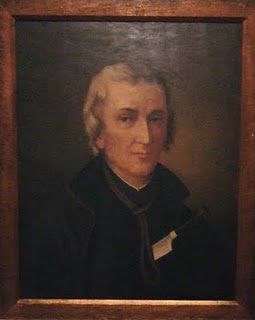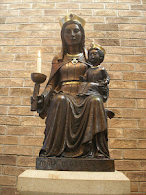The month is quickly slipping into the past and I should not allow that to happen without speaking of its significance in the Church’s year. This month, October, is designated by the Church as a Marian month, the month of the Holy Rosary. The Rosary’s roots can be found in several early Christian traditions which share similar formats to the rosary with repetitive prayers. The earliest form of the Rosary developed when Pope Gregory the Great (590-604) popularized an earlier version of the Hail Mary by having it prayed on the fourth Sunday of Advent. Many people then began praying the Hail Mary in a repetitive fashion using a string of beads to keep track of the prayers.
Without doubt, the Hail Mary, also known as the Angelic Salutation, is the most well known and most beloved of Marian prayers. It took many years to come together as the prayer we know today. The earliest version simply added Mary’s name to the message of the Angel Gabriel to Mary: “Hail, full of grace, the Lord is with thee.” (Luke 1:28)
 |
| The Angel Gabriel and Mary |
The Holy name of “Jesus” was added to the Angelic Salutation by Pope Urban IV in 1261.
 |
| Pope Urban IV |
In 1566, the Catechism of the Council of Trent included the final petition, concluding with the words “now and at the hour of our death. Amen.”
 |
| St Peter Canisius |
So, today, we have that beautiful prayer: “Hail Mary, full of grace, the Lord is with thee. Blessed art thou among women, and blessed is the fruit of thy womb, Jesus. Holy Mary, Mother of God, pray for us sinners, now and at the hour of our death. Amen.”
 |
| A house/shop in France |
 |
| Our Lady of Fatima |
Queen of Martyrs, pray for us.
Queen of the most holy Rosary, pray for us.












.JPG)

.JPG)



.JPG)
